Thursday 2 February, 2006, 21:28 - Radio Randomness
 No doubt a lot of people received cordless phones in their Christmas stocking, not least because with cellular phones all the fashion, it seems rather restrictive to have to use a fixed phone at home. Cordless phones come in many flavours, but in particular come in analogue and digital varieties. It's not always that simple to identify, however, which phone is which. In the radio sense, an analogue phone is one which uses analogue modulation (usually FM) to carry the audio to and from the phone. Conversely, a digital phone is one which uses digital modulation. However some unscrupulous retailers who believe that the 'digital' tag is something which sells, often call phones with digital answerphones (i.e. that record messages digitally) as 'digital cordless phones' - they aren't!
No doubt a lot of people received cordless phones in their Christmas stocking, not least because with cellular phones all the fashion, it seems rather restrictive to have to use a fixed phone at home. Cordless phones come in many flavours, but in particular come in analogue and digital varieties. It's not always that simple to identify, however, which phone is which. In the radio sense, an analogue phone is one which uses analogue modulation (usually FM) to carry the audio to and from the phone. Conversely, a digital phone is one which uses digital modulation. However some unscrupulous retailers who believe that the 'digital' tag is something which sells, often call phones with digital answerphones (i.e. that record messages digitally) as 'digital cordless phones' - they aren't!Why does all this matter? Well, only true digital phones offer any level of security over eavesdropping on your calls. Analogue phones are as very easy to tune into (more of which later...) I know of people who have bought 'digital cordless phones' in the belief that their calls were secure. A brief demonstration using a portable receiver as to how easy it is to overhear their calls sent them rushing back to the retailer from who they purchased the phone. Would the retailer swap it for a proper digital phone - not without them paying an additional fee (It's true to say that true digital phones still command a slight margin over analogue phones).
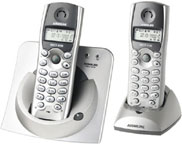 So how do you know whether the cordless phone you have is digital or not? Well, firstly if it is clearly marked as a 'DECT' phone (usually shown as the letters 'DECT', standing for Digital Enhanced Cordless Telephony, inside an oval shaped blob) then you're fine. As well as being digital, DECT, a European standard, normally operates at frequencies between 1880 and 1900 MHz which means that signals don't tend to travel far outside the house. There is an equivalent American DECT standard known as DCT-U and alternative American digital standards, all operating around 900 MHz.
So how do you know whether the cordless phone you have is digital or not? Well, firstly if it is clearly marked as a 'DECT' phone (usually shown as the letters 'DECT', standing for Digital Enhanced Cordless Telephony, inside an oval shaped blob) then you're fine. As well as being digital, DECT, a European standard, normally operates at frequencies between 1880 and 1900 MHz which means that signals don't tend to travel far outside the house. There is an equivalent American DECT standard known as DCT-U and alternative American digital standards, all operating around 900 MHz.For a practical test, try holding your phone next to an electrically noisy device such as a food blender, electric drill or lift/elevator motor. If you can hear crackles or whooshes over the top of your call, chances are you are using an analogue phone.
In the UK, there are three bands in which analogue cordless telephones, termed CT0 - cordless telephony 0 - to represent the '0th' generation of technology - can legally operate (phones imported from other European countries or outside Europe may operate in different bands).
The first of these bands, specified in UK standard MPT 1322 has a base transmitter on frequencies between 1.642 and 1.782 MHz, just off the end of the medium-wave broadcast band, paired with handset transmitters on frequencies between 47.44375 and 47.54375 MHz with a maximum radiated power of 10mW (erp). They can be identified as the base unit has a wire, up to 3 metres long, which trails out of the back. Using such a low frequency, the base transmitters can radiate over quite some distance. These phones are being phased out in preference to the band identified below, but a tune over the lower frequency band will usually yield a number of units still in operation. The handsets, being low power and with small antennas, tend not to radiate over such a wide area.
In 1996 the Radiocommunications Agency, then responsible for managing the radio spectrum in the UK, realised the need for additional channels for analogue cordless telephony to relieve the congestion that was occuring in the existing bands. A further 8 channels were released (specification MPT 1384) with base units transmitting in the range 31.0375 to 31.2125 MHz, and handsets in the range 39.9375 to 40.1125 MHz again at a power of 10mW (erp). Ranges for the base transmitters vary but can extend to over a km.
 One final range of frequencies is used for long range cordless phones (complying with UK standard MPT 1371) with only two channels available and a maximum radiated power of 100mW (erp). Base units transmit on either 47.43125 or 47.41875 MHz and handsets on 77.5125 or 77.5500 MHz.
One final range of frequencies is used for long range cordless phones (complying with UK standard MPT 1371) with only two channels available and a maximum radiated power of 100mW (erp). Base units transmit on either 47.43125 or 47.41875 MHz and handsets on 77.5125 or 77.5500 MHz.If you have a receiver that tunes across the range of frequencies used by these analogue phones, particularly those used by the base units, have a listen (though obviously I haven't told you to do this as doing so would force you to break the law and I can't possibly condone that kind of thing). It's amazing what range 10mW can give at some of these frequencies. Far be it for me to suggest that you could make a game out of guessing which of your neighbours regularly visits a 'medium', or which one's son has just come out as or which has insurmountable debts or ...! And remember, if you buy a cordless phone for yourself, make sure it's digital!
add comment
( 1193 views )
| permalink
| 



 ( 2.8 / 953 )
( 2.8 / 953 )




 ( 2.8 / 953 )
( 2.8 / 953 )
Tuesday 3 January, 2006, 16:50 - Radio Randomness
Citizens' Band (CB) Radio began in the UK in the late 1970's when truckers and a few other enthusiasts (illegally) imported CB radios from the USA where they were widely available and relatively low cost. 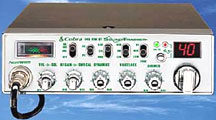 Prices for these illegal AM sets in the UK were typically around GBP50 which wasn't totally out of reach of even a few school kids. I fondly remember communicating via CB with many of a my school friends whose parents would surely have been worried if they'd known the penalties for operating the equipment!
Prices for these illegal AM sets in the UK were typically around GBP50 which wasn't totally out of reach of even a few school kids. I fondly remember communicating via CB with many of a my school friends whose parents would surely have been worried if they'd known the penalties for operating the equipment!Under immense populist pressure, the UK government finally relented and on 2 November 1981 the Radiocommunication Agency licensed CB radio of two flavours. CB in America (and in most other countries which had licensed it) operated on 40 channels spread out between 26.965 and 27.405 MHz. The UK decided that, as CB radio was meant to be a local communications service, it would license a different set of channels to stop UK 'breakers' from chatting to overseas CBers when conditions permitted - thus 40 channels from 27.60125 to 27.99125 were licenced with a maximum power of 4 watts and a maximum antenna size of 1.5 metres and height of 10 metres above the ground (these antenna restrictions have since been relaxed). Equipment (marked 'CB 27/81') for the band was readily available from day one at prices similar to the illigaly available US equipment.
In addition to the 27 MHz channels, an additional 20 channels were licensed in the frequency range 934.0125 - 934.9625 MHz. The 934 MHz band was mainly for enthusiasts as equipment was relatively cutting edge and hence expensive and operation required a great deal of skill. A licence fee of GBP10 per year (now GBP15) was payable to use either (or both) bands, though many users, having been used to operating illegally, never bothered with this formailty.
In 1988 the Radiocommunications Agency succumbed to pressure from Europe and licensed the US 27 MHz channels (which had been formally adopted by CEPT for use across Europe). At the same time the withdrawal of the 934 MHz band (at the end of 1998) was announced to make way for GSM phones, and the use of the original UK-only 27 MHz channels was frozen with no new equipment allowed to be manufactured in favour of the CEPT channels.
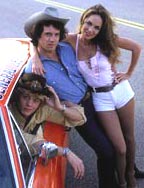 With the ready availability of equipment and the boosted awareness of CB amongst the general population through films such as 'Convoy' and 'Smokey and the Bandit' and TV shows such as 'The Dukes of Hazzard', the CB channels quickly became the playground for every kind of nutter you could imagine. Many channels were filled with the likes of frustrated DJ's who would spend hours playing music from their bedrooms and people who thought that swearing incessantly on the calling channel represented sport. Towards the end of the 1980's CB usage began to wane and today, even in a highly populated area such as London a tune across the 40 UK and 40 CEPT CB channels yields very little usage. Also, 27 MHz is not an ideal frequency for local communications. At certain times of the year, especially in the summer, propagation allows communication over 1000's of km and channels become clogged as it becomes easier to talk to breakers from faraway places such as Italy and Russia than to talk to people only a few km away.
With the ready availability of equipment and the boosted awareness of CB amongst the general population through films such as 'Convoy' and 'Smokey and the Bandit' and TV shows such as 'The Dukes of Hazzard', the CB channels quickly became the playground for every kind of nutter you could imagine. Many channels were filled with the likes of frustrated DJ's who would spend hours playing music from their bedrooms and people who thought that swearing incessantly on the calling channel represented sport. Towards the end of the 1980's CB usage began to wane and today, even in a highly populated area such as London a tune across the 40 UK and 40 CEPT CB channels yields very little usage. Also, 27 MHz is not an ideal frequency for local communications. At certain times of the year, especially in the summer, propagation allows communication over 1000's of km and channels become clogged as it becomes easier to talk to breakers from faraway places such as Italy and Russia than to talk to people only a few km away.So is CB radio dead? Well in its original format, possibly. The new UK regulator, Ofcom, has allowed an experiment called the 'Community Audio Distribution System (CADS)' in the 27 MHz band to try and make use of these otherwise empty channels. Meanwhile, in April 1999, Ofcom de-regulated a set of frequencies in the range 446.00625 to 446.09375 for a service called 'PMR446'. PMR446 was a replacement for the previous 'Short Range Business Radio (SRBR)' service which allowed the use of 3 channels at 461 MHz at low power for just GBP30 per annum and was intended to be used by businesses whose radio requirements did not merit a wider-area licence (such as between shop assistants in department stores). However, being licence-exempt, the PMR446 service soon found favour amongst a variety of radio users who might otherwise have used CB. Eight channels are available and equipment is restricted to 500 mW of power and integral antennas, however reliable ranges of around 1km are common.
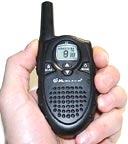 Thus those who want to use radio for non-commercial use such as families and event organisers have access to channels which are largely, though not exclusively, idiot-free and that do not suffer from frequent continental interference. PMR446 is an analogue service, however having regocnised its potential, a digital version of PMR446 which should supposedly offer greater range and better audio quality is already on the cards.
Thus those who want to use radio for non-commercial use such as families and event organisers have access to channels which are largely, though not exclusively, idiot-free and that do not suffer from frequent continental interference. PMR446 is an analogue service, however having regocnised its potential, a digital version of PMR446 which should supposedly offer greater range and better audio quality is already on the cards. Where does this leave CB then? With 27 MHz mostly dead and most 'community' use of radio now using the short-range PMR446 service, there is still a need for a wider area CB type service to replicate the service offered by CB for businesses such as taxi's and logistics companies. Help may be at hand in the form of the little recognised 'UK General' licence. This allows the use of a number of VHF and UHF frequencies with 5 Watts of power (10 times more than PMR 446), however a licence fee of GBP60 every 3 years is payable. The frequencies which can be used are:
77.6875 MHz
86.3375 MHz
86.3500 MHz
86.3625 MHz
86.3750 MHz
164.0500 MHz
164.0625 MHz
169.0875 MHz
169.3125 MHz
173.0625 MHz
173.0875 MHz
173.0500 MHz
449.3125 MHz
449.4000 MHz
449.4750 MHz
A quick scan of this odd collection of channels in West London shows that many are relatively unoccupied and would offer great potential for a supplemental service to PMR446. A more sensible pricing regime for the use of these frequencies (say GBP15 per annum...) or indeed the inclusion of these channels in the UK CB licence might just tip the balance back in favour of CB radio as a sensible solution to the radio needs of small businesses.
Monday 19 December, 2005, 15:31 - Licensed
For some time now, I've been intrigued by suggestions that Ofcom (and its predecessor the Radio Authority) is toying with the idea of issuing further licences for FM radio stations in London. Whilst the FM band in London is undoubtedly alive with stations, there is still a relatively limited number of stations on-air compared to many other major cities and the variety of programming they offer is even smaller. There is certainly commercial scope for more FM stations in London.Currently on FM in London there are 14 London-wide and 7 local stations which are, in frequency order:
88.8/89.1 BBC Radio 2 (the lower frequency is transmitted with a power of 4kW from Crystal Palace and the higher with a power of 250kW from Wrotham, on the eastern outskirts of London. The same pattern is true for the other BBC national stations and for Classic FM)
91.0/91.3 BBC Radio 3
 93.2/93.5 BBC Radio 4
93.2/93.5 BBC Radio 494.9 BBC London
95.8 Capital FM
96.9 Choice FM (South London)
97.3 LBC
98.5/98.8 BBC Radio 1
100.0 Kiss FM
100.6/100.9 Classic FM
102.2 Smooth FM
103.3 London Greek Radio (North London)
104.9 XFM
105.4 Magic FM
105.8 Virgin Radio
106.2 Heart 106.2
106.8 Time FM (South East London)
107.1 Choice FM (North London)
107.3 Time FM (South East London)
107.5 Time FM (South East London)
107.8 Radio Jackie
In addition to these stations, there are numerous other BBC and commercial radio stations whose broadcasts overlap from their primary coverage area into the outskirts of London, as well as many BBC relay stations to cover gaps in coverage from the main transmitter sites.
In early 2000 the Radiocommunications Agency, the Radio Authority (both now integrated into Ofcom) and the BBC conducted a study into the possibility of licensing more FM radio stations. The study considered the potential for additional stations in the FM band and sought, in particular, to identify allocations that might be used to provide new services in the London (and Leeds) area. To try and see whether it might be possible to fit more stations on the FM dial in London, the study made some very odd assumptions about what frequencies might be used in London. It took the assumption that instead of adding or re-planning stations to free up frequencies, that from 94.9 and 102.2 MHz upwards, there would be a station in London every 400 kHz (i.e. 94.9, 95.3, 95.7... and 102.2, 102.6, 103.0, etc...) and then looked at the impact that these stations would have on neighbouring stations to whom they would cause interference.
The study concluded that 'In the London area, it was found that there appeared to be some opportunity for the accommodation of further city-wide services, if the need for some re-planning of the network is accepted. For a small number of such additional services it may be that the 'cost' of the re-planning would be limited to changes in the frequencies of surrounding services and a relatively small loss of coverage by a few surrounding services. It should be noted that this study was not required to consider the constraints imposed by continental interference. If this is taken into account there will be less scope for additional services, particularly in the London area.'. Further it added that 'The scope for use of the BBC national network sub-bands was limited by the large number of high-power transmitters in this part of the spectrum. One frequency was identified, however, which might be used to provide additional London-wide service at the expense of current BBC coverage.'.
So what were the frequencies that were identified for potential new London-wide stations, and what has happened since? Well, the frequency which was identified that could be used in London with impact only on listeners in Reigate (Mercury FM on 102.7 MHz which would move to 103.6 MHz) and Chelmsford (Essex FM on 102.6 MHz which would move to 102.8 MHz) was 102.6 MHz (Fox FM in Oxford would also move from 102.6 MHz to 102.4 MHz), and the frequency in the BBC national sub-band that was identified was 92.5 MHz, which it was claimed would upset virtually all the listeners to the BBC Radio 4 service in Guildford on 92.5 MHz who instead of their current 4kW service would get a 50W low-power service on 93.7 MHz. It would seem that since the publication of this report, nothing has happened. No action was taken by any of the parties involved to instigate any changes which might bring about a new license.
 Rumours have since surfaced that the frequency of 87.6 MHz might also be used in London. This frequency (actually any frequency in the band 87.6 to 87.9 MHz) is currently reserved for low-power RSL stations, however there is no regulatory reason why a new, high-power, London-wide service could not use this frequency (with the possible problem of the need to co-ordinate with RTL on 87.6 in Lens in northern France). Whilst this would restrict the potential for RSL stations, it would not cause interference to any other UK stations as the band is otherwise unused. Further, the 3 Time FM stations in neighbouring parts of south east London which were previously different stations could now be consolidated onto a single frequency and the band between 106.8 and 107.5 re-arranged to release another London-wide assignment. It has also been postulated that a frequency around 101.6 MHz could be used for a London-wide service (subject to finding a new home for Kent based KM-FM on 101.6 MHz and possibly Ten-17 in Harlow on 101.7 MHz). The original study did not consider the 107 MHz frequency range, nor did it consider 101.6 MHz.
Rumours have since surfaced that the frequency of 87.6 MHz might also be used in London. This frequency (actually any frequency in the band 87.6 to 87.9 MHz) is currently reserved for low-power RSL stations, however there is no regulatory reason why a new, high-power, London-wide service could not use this frequency (with the possible problem of the need to co-ordinate with RTL on 87.6 in Lens in northern France). Whilst this would restrict the potential for RSL stations, it would not cause interference to any other UK stations as the band is otherwise unused. Further, the 3 Time FM stations in neighbouring parts of south east London which were previously different stations could now be consolidated onto a single frequency and the band between 106.8 and 107.5 re-arranged to release another London-wide assignment. It has also been postulated that a frequency around 101.6 MHz could be used for a London-wide service (subject to finding a new home for Kent based KM-FM on 101.6 MHz and possibly Ten-17 in Harlow on 101.7 MHz). The original study did not consider the 107 MHz frequency range, nor did it consider 101.6 MHz.So potentially there are five frequencies which could be released for new stations: 87.6, 92.5, 101.6, 102.6 and somewhere around 107 MHz. With the exception of 87.6 MHz, none of these provides an interference free answer to new London-wide stations, but there seems to be no reason why Ofcom could not look to offer new licenses in London. With the propensity of pirate stations in the capital, there is clearly excessive demand for stations, so why is Ofcom so reluctant to consider a new station or two?
Maybe there is pressure from the existing licensees not to introduce further competition, whilst there is clearly competition between the existing stations, working together as a cartel to block any additional competition is clearly in all of their commercial interests. Maybe Ofcom is busy with other things (for example the raft of community licences recently issued). Or maybe it's just that the people who looked at the problem in the first place have now moved on since the reorganisation that formed Ofcom and no one has been tasked with reviewing the study and taking the necessary action. I'm not sure that there's anything that can be done to 'gee-up' Ofcom, however I felt that raking up the old muck again might just stir some action somewhere.
Thursday 15 December, 2005, 02:00 - Spectrum Management
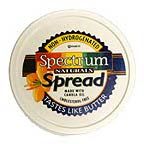 The concept of 'spread spectrum' dates back to World War II when the concept was put to use as countermeasures against jamming; against detection by radar; against detection of navigation beacons and as a way to make interception of communications more difficult. The idea is to take a signal and spread it across a much wider range of frequencies than the originating (data) signal would have otherwise occupied; indeed this is one of the two requirements of a system to be officially designated as spread spectrum. The other requirement is that some function of the original data signal has an impact on the final spread spectrum signal - a technicality that we won't bother with here as it's not relevant to the ensuing discussion.
The concept of 'spread spectrum' dates back to World War II when the concept was put to use as countermeasures against jamming; against detection by radar; against detection of navigation beacons and as a way to make interception of communications more difficult. The idea is to take a signal and spread it across a much wider range of frequencies than the originating (data) signal would have otherwise occupied; indeed this is one of the two requirements of a system to be officially designated as spread spectrum. The other requirement is that some function of the original data signal has an impact on the final spread spectrum signal - a technicality that we won't bother with here as it's not relevant to the ensuing discussion.But what is the point of this? Why occupy more spectrum than is necessary? Isn't this a highly inefficient use of spectrum?
Well spreading a signal has two noticeable effects:
1. It makes the signal much more difficult to detect;
2. It makes the signal much less susceptible to narrow-band interference (such as traditional jamming signals).
Clearly these effects have immediate military connotations and it is no surprise that (as with many other radio techniques) the idea was first put to use in this context, however these effects also have great benefits for other uses too. Let's examine them one by one.
Reduced likelihood of detection
 From a civil perspective, reducing the likelihood that your transmissions will be heard isn't of major concern except perhaps in public telecommunications networks, however the use of encryption is a much more straightforward way of going about making your transmissions private. For 'reduced likelihood of detection' we could alternatively write 'reduced likelihood of causing interference', as if a signal is difficult to detect, it is unlikely to cause interference to another transmission. In fact, all modern cellular phone networks use some kind of spread spectrum technique to try and reduce the interference that a handset communicating with one base-station causes to other base-stations in the network. Also, for technologies such as Wireless LAN and Bluetooth where many users share the same piece of spectrum, using spread spectrum techniques vastly reduces the probability of users causing each other interference.
From a civil perspective, reducing the likelihood that your transmissions will be heard isn't of major concern except perhaps in public telecommunications networks, however the use of encryption is a much more straightforward way of going about making your transmissions private. For 'reduced likelihood of detection' we could alternatively write 'reduced likelihood of causing interference', as if a signal is difficult to detect, it is unlikely to cause interference to another transmission. In fact, all modern cellular phone networks use some kind of spread spectrum technique to try and reduce the interference that a handset communicating with one base-station causes to other base-stations in the network. Also, for technologies such as Wireless LAN and Bluetooth where many users share the same piece of spectrum, using spread spectrum techniques vastly reduces the probability of users causing each other interference.Of course spread spectrum is not the panacea of interference mitigation as if two spread spectrum signals of the same type and on the same frequency clash they still cause each other interference, but it can go a long way to reducing interference between users, especially in de-regulated radio environments where it's 'every user for themselves'.
Reduced suscepitibility to narrow-band interference
Spreading a signal across a wide-range of frequencies means that the amount of information transmitted in any portion of those frequencies is only a fraction of the overall information being transmitted. As such, if a portion of the spread signal is interfered with, the received data will only be fractionally affected and with data correction techniques it is possible to stop narrow-band signals from interfering with spread spectrum signals at all. Of course one spread spectrum signal could easily interfere with another using the same frequencies as if all the frequencies in use are affected there is generally no way to 'tune-out' the interfering signal.
Spread spectrum systems are therefore largely immune to narrow-band interference such as might be caused by traditional AM or FM signals. As well as the obvious anti-jamming military uses, this still has great benefit in a civil situation where a system has to share spectrum with lots of potentially interfering sources.
Spread Spectrum Techniques
There are two commonly deployed spread-spectrum techniques plus two uncommon ones:
 Frequency Hopping Spread Spectrum (FHSS) is a commonly deployed technique whereby a signal changes frequency or 'hops' (usually very rapidly) across a wide band of available frequencies. The receiver has to be synchronised with the transmitter so that it knows what hopping pattern to follow. If a few of the frequencies onto which the system hops have interference, the overall transmission will still be received as communication continues takes places on the clear frequencies (indeed some systems are intelligent and cease to use frequencies on which interference is present).
Frequency Hopping Spread Spectrum (FHSS) is a commonly deployed technique whereby a signal changes frequency or 'hops' (usually very rapidly) across a wide band of available frequencies. The receiver has to be synchronised with the transmitter so that it knows what hopping pattern to follow. If a few of the frequencies onto which the system hops have interference, the overall transmission will still be received as communication continues takes places on the clear frequencies (indeed some systems are intelligent and cease to use frequencies on which interference is present). Hopping across a wide range of frequencies has one additional benefit: the propagation conditions on one frequency will be different to those on another frequency, such that, especially in mobile environments, FHSS signals provide a way to mitigate against the frequency selective fading that occurs. Even changes in frequency of a few percent can be useful and this is one of the main reasons that GSM networks often employ FHSS from the handsets. Bluetooth also uses FHSS but in this case to dodge between the large number of interfering signal that appear in the shared frequency band it inhabits.
Direct Sequence Spread Spectrum (DSSS) is a commonly deployed technique whereby a radio signal is spread by mixing it with a high bit-rate data spreading signal. At the receiver, the same spreading signal can be used to 'de-spread' the received signal and return it to its original state. This de-spreading results in any narrow-band interference being spread and effectively turned into background noise. Equally, the effect of frequency selective fading (as found in mobile environments) is to null out reception on some frequencies. with DSSS these nulls will be spread to appear as 'anti-noise', or in other words, a small reduction in the overall reveived signal.
Unlike FHSS signals which only occupy one frequency at once, DSSS signals occupy all the frequencies over which they have been spread at the same time. CDMA systems use DSSS, as do Wireless LAN's conforming to many of the 802.11 series of standards.
Chirp is an uncommon technique in which a transmission begins on one frequency and ends on another, changing from one to the other during the period of the transmission. It is difficult to receive such signals as almost perfect synchronisation is needed between receiver and transmitter in terms of time and frequency, however with modern signal processing techniques it is becoming possible.
Chirp, however, is often used for radar systems as it is a spectrally efficient way of generating the wide-bandwidth transmissions that are required to ensure the accuracy of the radar.
Time Hopping Spread Spectrum (THSS) is an undeveloped technique in which, the transmitted signal is turned on and off in a psuedo-random fashion (thus hopping on and off with time). Interest has been raised in this technique as a method for sharing spectrum for Ultra Wide Band devices.
Spread spectrum techniques are now a part of every-day radio usage both for military and civil systems and are allowing more effective use of spectrum to be made as well as providing a means of using otherwise difficult to use spectrum (such as that shared with microwave ovens). What will be the next military technique to make the cross-over to every-day civil usage?

